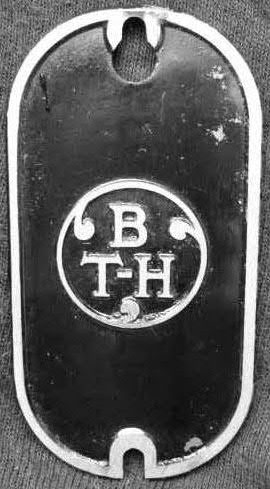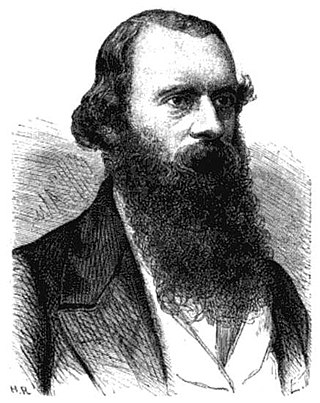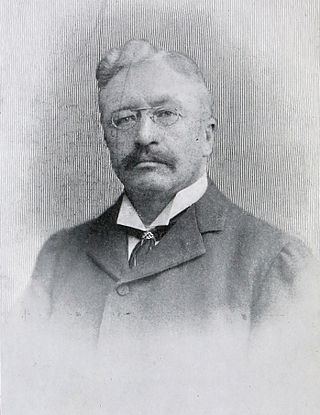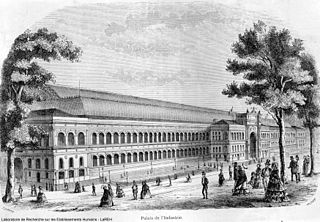
Telegraphy is the long-distance transmission of messages where the sender uses symbolic codes, known to the recipient, rather than a physical exchange of an object bearing the message. Thus flag semaphore is a method of telegraphy, whereas pigeon post is not. Ancient signalling systems, although sometimes quite extensive and sophisticated as in China, were generally not capable of transmitting arbitrary text messages. Possible messages were fixed and predetermined and such systems are thus not true telegraphs.

Ernst Werner Siemens was a German electrical engineer, inventor and industrialist. Siemens's name has been adopted as the SI unit of electrical conductance, the siemens. He founded the electrical and telecommunications conglomerate Siemens.
The General Electric Company (GEC) was a major British industrial conglomerate involved in consumer and defence electronics, communications, and engineering. The company was founded in 1886, was Britain's largest private employer with over 250,000 employees in the 1980s, and at its peak in the 1990s, made profits of over £1 billion a year.

Sir Carl Wilhelm Siemens, anglicised to Charles William Siemens, was a German-British electrical engineer and businessman.
The Western Electric Company was an American electrical engineering and manufacturing company officially founded in 1869. A subsidiary of the American Telephone and Telegraph Company for most of its lifespan, it served as the primary equipment manufacturer, supplier, and purchasing agent for the Bell System from 1881 until 1984, when the system was dismantled. The company was responsible for many technological innovations, as well as developments in industrial management.

The English Electric Company Limited (EE) was a British industrial manufacturer formed after the armistice of World War I by amalgamating five businesses which, during the war, had been making munitions, armaments and aeroplanes.
Associated Electrical Industries (AEI) was a British holding company formed in 1928 through the merger of the British Thomson-Houston Company (BTH) and Metropolitan-Vickers electrical engineering companies. In 1967 AEI was acquired by GEC, to create the UK's largest industrial group. A scandal that followed the acquisition is said to have been instrumental in reforming accounting practices in the UK.

British Thomson-Houston (BTH) was a British engineering and heavy industrial company, based at Rugby, Warwickshire, England. Originally founded to sell products from the Thomson-Houston Electric Company, it soon became a manufacturer using licenses from the American company. They were known primarily for their electrical systems and steam turbines.

Standard Telephones and Cables Ltd was a British manufacturer of telephone, telegraph, radio, telecommunications, and related equipment. During its history, STC invented and developed several groundbreaking new technologies including pulse-code modulation (PCM) and optical fibres.

Josiah Latimer Clark FRS FRAS, was an English electrical engineer, born in Great Marlow, Buckinghamshire.

Siemens & Halske AG was a German electrical engineering company that later became part of Siemens.
Dick, Kerr and Company was a locomotive and tramcar manufacturer based in Kilmarnock, Scotland and Preston, England.

Coventry Ordnance Works was a British manufacturer of heavy guns particularly naval artillery jointly owned by Cammell Laird & Co of Sheffield and Birkenhead, Fairfield Shipbuilding and Engineering Company of Govan, Glasgow and John Brown & Company of Clydebank and Sheffield. Its core operations were from a 60-acre site in Stoney Stanton Road in the English city of Coventry, Warwickshire.
William Thomas Henley (1814–1882) was a pioneer in the manufacture of telegraph cables. He was working as a porter in Cheapside in 1830, leaving after disputes with his employer, and working at the St Katherine Docks for six years. During those years he was determined to learn a trade and used money from an aunt to purchase a lathe, vice and lumber with which he made a work bench. With those tools he taught himself to turn wood and brass and began to experiment, including with electricity.

Alexander Siemens was a German electrical engineer.

The first International Exposition of Electricity in Paris ran from August 15, 1881 through to November 15, 1881 at the Palais de l'Industrie on the Champs-Élysées. It served to display the advances in electrical technology since the small electrical display at the 1878 Universal Exposition. Exhibitors came from the United Kingdom, United States, Germany, Italy and the Netherlands, as well as from France. As part of the exhibition, the first International Congress of Electricians presented numerous scientific and technical papers, including definitions of the standard practical units volt, ohm and ampere.

The Edison and Swan Electric Light Company Limited was a manufacturer of incandescent lamp bulbs and other electrical goods. It was formed in 1883 with the name Edison & Swan United Electric Light Company with the merger of the Swan United Electric Company and the Edison Electric Light Company.

Siemens is the name of a family of German technology and telecommunications industrialists, founders and to the present day largest shareholders of Siemens AG. The family have a wealth of over €8 billion, making them the 5th richest family in Germany, according to Handelsblatt.

The India Rubber, Gutta Percha and Telegraph Works Company was a London-based company based in Silvertown, East London. It was founded by Stephen William Silver in March 1864 as Silver's Indiarubber Works and Telegraph Cable Company Ltd. However in July that year the name was changed to the India Rubber, Gutta Percha and Telegraph Works Company.

The Gutta Percha Company was an English company formed in 1845 to make a variety of products from the recently introduced natural rubber gutta-percha. Unlike other natural rubbers, this material was thermoplastic allowing it to be easily moulded. Nothing else like it was available to manufacturing until well into the twentieth century when synthetic plastics were developed.



























